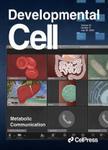版权所有:内蒙古大学图书馆 技术提供:维普资讯• 智图
内蒙古自治区呼和浩特市赛罕区大学西街235号 邮编: 010021

作者机构:Barcelona Inst Sci & Technol Ctr Genom Regulat CRG Dr Aiguader 88 Barcelona 08003 Spain Inst Salud Carlos III CIBER Diabet & Enfermedades Metab Asociadas Madrid Spain Imperial Coll London Imperial Biomed Res Ctr Natl Inst Hlth Res NIHR Dept Metab Digest & ReprodGenet & Genom Sect London W12 0NN England Univ Pompeu Fabra UPF Barcelona 08003 Spain
出 版 物:《DEVELOPMENTAL CELL》 (发育细胞)
年 卷 期:2022年第57卷第16期
页 面:1922-+页
核心收录:
学科分类:0710[理学-生物学] 07[理学] 071009[理学-细胞生物学] 09[农学] 0901[农学-作物学] 090102[农学-作物遗传育种]
基 金:Ministerio de Ciencia e Innovacion Medical Research Council Wellcome Trust Senior Investigator Award European Research Council Advanced Grant [BFU2014-54284-R, RTI2018-095666-B-I00] CIBERDEM-Instituto de Salud Carlos III [MR/L02036X/1] European Research Council (ERC) under the European Union [WT101033] Spanish Ministry of Science and Innovation to the EMBL partnership, Centro de Excelencia Severo Ochoa CERCA Programme (Generalitat de Catalunya) 2019 EFSD Rising Star Programme EFSD/Novo Nordisk EMBO Long-Term Fellowship ALT295-2019 MRC [MR/L02036X/1] Funding Source: UKRI
主 题:enhancers non-coding mutations Mendelian disease diabetes mellitus stem cell differentiation PTF1A NEUROG3 endocrine differentiation pancreas development
摘 要:Sequence variants in cis-acting enhancers are important for polygenic disease, but their role in Mendelian dis-ease is poorly understood. Redundancy between enhancers that regulate the same gene is thought to mitigate the pathogenic impact of enhancer mutations. Recent findings, however, have shown that loss-of-function mu-tations in a single enhancer near PTF1A cause pancreas agenesis and neonatal diabetes. Using mouse and human genetic models, we show that this enhancer activates an entire PTF1A enhancer cluster in early pancre-atic multipotent progenitors. This leading role, therefore, precludes functional redundancy. We further demon-strate that transient expression of PTF1A in multipotent progenitors sets in motion an epigenetic cascade that is required for duct and endocrine differentiation. These findings shed insights into the genome regulatory mechanisms that drive pancreas differentiation. Furthermore, they reveal an enhancer that acts as a regulatory master key and is thus vulnerable to pathogenic loss-of-function mutations.